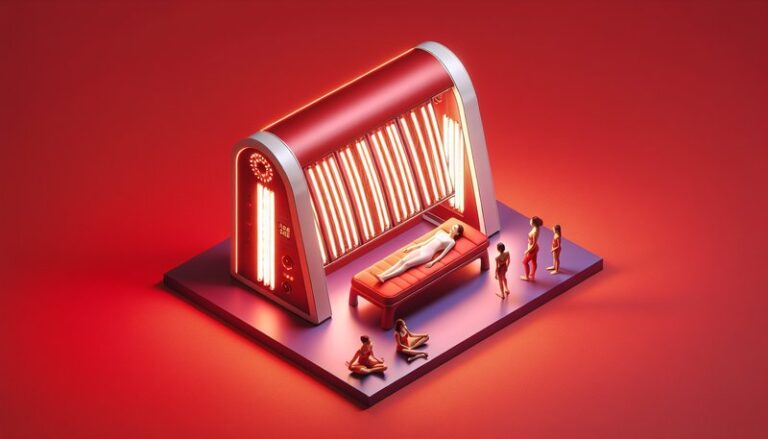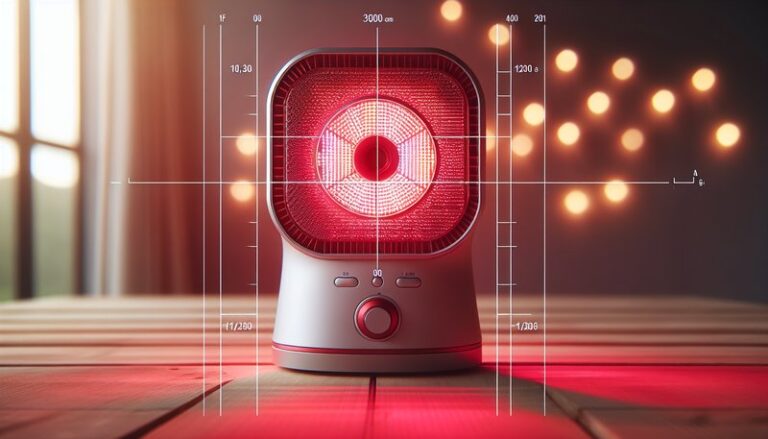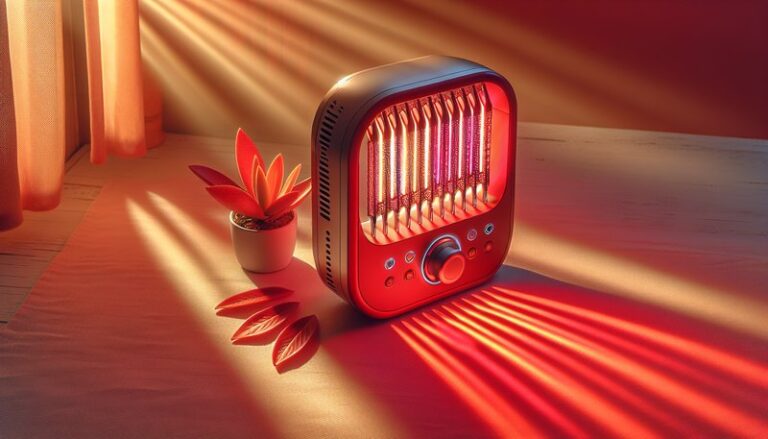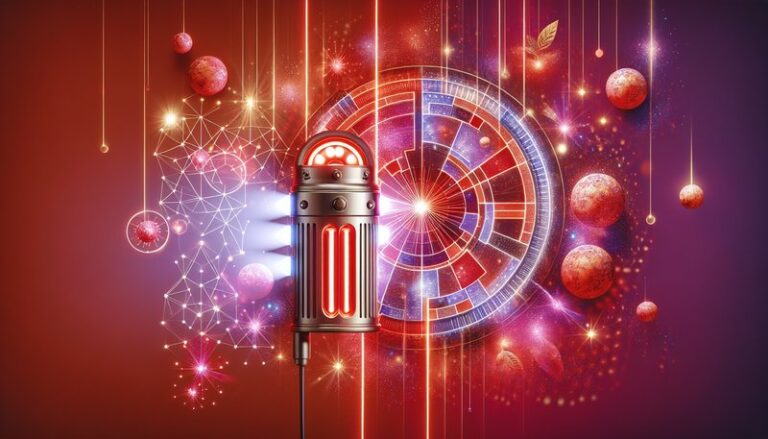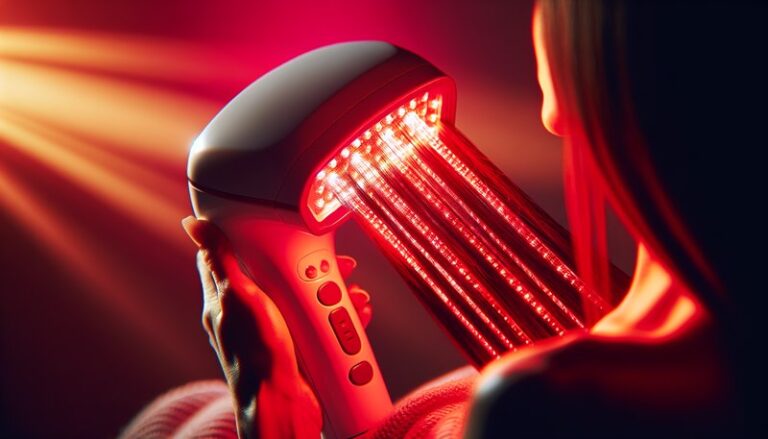Does Red Light Therapy Break Down Scar Tissue?
Does Red Light Therapy Break Down Scar Tissue?
Have you ever wondered if red light therapy can aid in reducing scars and improving skin texture? This article explores the role of red light therapy in breaking down scar tissue, explaining how it works, its benefits, and alternatives available for scar treatment.
Red light therapy is an emerging non-invasive treatment option that uses low-level wavelengths of red light to promote healing and reduce inflammation. In this article, we will delve into the potential effectiveness of this therapy in breaking down scar tissue, the benefits associated with it, and other treatment options to consider.
Discover the full story Red Light Therapy Frequency
Key Takeaways
- Red light therapy may enhance collagen production and improve skin healing, helping to break down scar tissue.
- The therapy is considered safe with minimal side effects, making it an attractive option for scar treatment.
- Alternatives to red light therapy exist, such as laser therapy and topical treatments, which may also help reduce the appearance of scars.
What is Red Light Therapy?
Red light therapy (RLT), also known as low-level laser therapy (LLLT), is a treatment that uses specific wavelengths of red light to penetrate the skin and stimulate cellular processes. This therapy is thought to promote healing by enhancing blood circulation, reducing inflammation, and accelerating tissue repair.
RLT has been studied in various medical fields, from dermatology to sports medicine. In the context of scar healing, red light therapy is often used to stimulate fibroblast activity, which increases collagen production—a crucial component in skin repair and improving the texture of damaged skin.
Moreover, red light therapy is typically conducted using handheld devices or panels that can be applied directly to the skin, making it a versatile option for at-home or professional treatments.
What are the Benefits of Red Light Therapy?
There are several notable benefits associated with red light therapy, particularly concerning scar tissue breakdown.
Promotes Collagen Production
Collagen is a vital protein that provides structure and elasticity to the skin. Red light therapy has been shown to stimulate fibroblast cells, leading to increased collagen synthesis, which is essential for restoring the skin’s texture and reducing scars.
Reduces Inflammation
Scar tissue formation often involves inflammatory processes. RLT has anti-inflammatory effects that can help minimize redness and swelling around scars, thereby promoting a healthier healing environment.
See our thorough exploration of Can Red Light Therapy Treat Cellulite?
Enhances Blood Circulation
Improved blood flow can facilitate the delivery of nutrients and oxygen to affected areas while removing waste products. This enhanced circulation can speed up the overall healing process for scarred tissues.
Non-invasive and Safe
Unlike surgical or more invasive treatments, red light therapy is non-invasive and generally considered safe, with minimal side effects. This makes it an appealing choice for those hesitant about more aggressive procedures.
Convenient Treatment Options
Red light therapy can be performed in professional settings or at home with the appropriate devices, offering flexibility for patients seeking scar treatment.
Is it Possible to Break Down Scar Tissue with Red Light Therapy?
The feasibility of using red light therapy to break down scar tissue is supported by various studies and anecdotal evidence. RLT has shown promise in improving the appearance of both surgical scars and acne scars.
While more robust clinical trials are needed for broader acceptance, many practitioners report positive results when incorporating red light therapy into scar treatment regimens. Patients can often see improvements in skin texture and reduced visibility of scars after several sessions.
What are the Advantages of Red Light Therapy for Scar Treatment?
- Minimal Downtime: Patients can often return to their regular activities immediately after treatment, unlike other procedures that might require recovery time.
- Customization: Treatments can be tailored to individual needs, allowing for targeted therapy on specific scars.
- Accessibility: With a range of devices available for at-home use and in clinics, patients can choose the most convenient option for their lifestyle.
What are the Disadvantages of Red Light Therapy for Scar Treatment?
- Variable Results: The effectiveness can vary from person to person; some may not experience significant improvement.
- Multiple Sessions Required: Achieving desired results often requires multiple treatments over weeks or months, which can be time-consuming and sometimes costly.
- Not a Standalone Solution: For severe scarring, RLT may need to be combined with other treatments for optimal results.
What are the Things to Consider Before Using Red Light Therapy?
Before opting for red light therapy to treat scars, there are several factors to keep in mind.
Consultation with a Healthcare Provider
Always consult with a healthcare professional before beginning any new treatment. This is especially important for individuals with specific health conditions or concerns about their scars.
Expectations Management
Understand that while red light therapy can lessen the appearance of scars, results may not be immediate or uniform for everyone. Setting realistic expectations is crucial for satisfaction with treatment.
Cost and Availability
Consider the financial aspect, including the cost of devices for at-home use versus professional treatments. Availability of local clinics offering red light therapy can also influence the choice of treatment.
What are the Alternatives to Red Light Therapy?
There are several alternative treatment options that can also help reduce scar tissue and improve skin appearance.
Laser Therapy
Laser treatments use focused light to target scar tissue, effectively breaking down the old tissue and promoting new skin growth. This method generally yields quick results but can require downtime for recovery.
Chemical Peels
Chemical peels involve applying a solution to the skin that exfoliates damaged layers. This can be beneficial for improving scars, particularly acne scars, though multiple treatments may be necessary.
Microdermabrasion
This technique uses fine crystals to exfoliate the skin’s surface, allowing for improved texture and a reduction in scar visibility. It is a non-invasive option that requires little to no downtime.
Conclusion: Is it Recommended to Use Red Light Therapy for Scar Treatment?
Red light therapy presents a promising option for individuals looking to break down scar tissue and improve the overall appearance of their skin. With notable benefits such as promoting collagen production and reducing inflammation, RLT is worth considering as part of a comprehensive scar treatment plan. However, it is essential to manage expectations and understand that individual results may vary.
Incorporating RLT alongside alternative treatments can enhance outcomes, allowing individuals to choose the best approach for their unique needs.
Frequently Asked Questions
How many sessions of red light therapy are typically needed?
The number of sessions required varies by individual and the severity of the scars. Most people benefit from 6 to 12 sessions, spaced a few days apart.
Are there any side effects associated with red light therapy?
Side effects are minimal and may include temporary redness or sensitivity in the treated area. Serious side effects are rare.
Can red light therapy be used for all types of scars?
Red light therapy can be beneficial for various scars, including surgical scars, acne scars, and even stretch marks. However, its effectiveness can vary by scar type and individual response.
Is red light therapy painful?
Most users report that red light therapy is painless, often describing the treatment as warm and relaxing.

